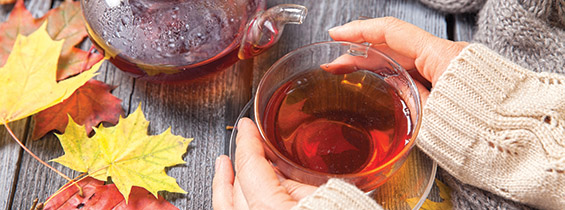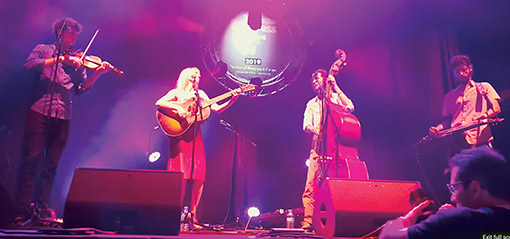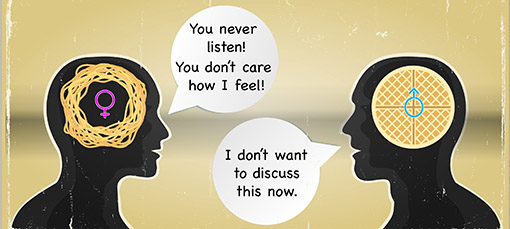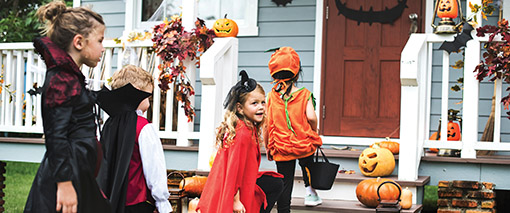By Peggy Ratusz
“There’s always this fear when I schedule a big show, as to how many people I’m going to see sitting in the audience. To sell out a show at the Grey Eagle was a dream of mine. This comfort washed over me while driving over for sound check, knowing all the seats had been sold.” These were Anya Hinkle’s thoughts this past January after one of her biggest local shows to date. She and her producer John Doyle who is a Celtic phenom, along with her stellar string band Tellico, presented their latest studio recording, “Woven Waters” at the Asheville music venue.
Woven Waters was voted #9 on WNCW radio’s “Top 100 Albums in 2018.” And since its release, Anya has been making the rounds; from her latest jaunt to France, Montreal, Virginia and Tennessee, to all parts of North Carolina. She’s newly equipped with critically acclaimed tunes like “Courage for the Morning,” (#1 on Folk Radio Music Charts) and the Merlefest’s Chris Smith Songwriting competition’s Bluegrass category winner, “Ballad of Zona Abston.”
It is her recent tour in La France profonde (deep France) that I was eager and delighted to talk about with Anya. But first, let me delve into a little bit of her history for those of you who are unfamiliar. This world traveler has encountered an array of landscapes, sights, and sounds; whether visiting or staying a while in places like Virginia (her home state), Japan (her husband’s native land), California, Pacific Islands, New Zealand, Fiji, Hawaii, and Costa Rica. By the time she planted in Asheville of 2006, she didn’t quite know how to musically and creatively intertwine the mix of cultures she’d encountered, with the traditional sounds of her new home in Appalachia.
Once she began to attend local bluegrass jams and making friends on the scene, she created a domino that lead to this “trip of a lifetime” recent tour in France.
Once you returned, can you describe how you felt about the overall experience?
“I had mixed emotions. Clearly it was fabulous. The food, the sights, the sounds, and the people I met; all that was wonderful. On a personal level though it was challenging bringing a band together for my first European tour, and present my music in a country where I didn’t speak the language.”
Luckily she discovered that European audiences are extremely receptive to American music, allowing for a cyclical reception of curiosity being satisfied.
“My grandfather played in a Jazz group in the 1930’s. He and his amateur bandmates took the maiden voyage of the famous SS Champlain to Paris in 1932 for a summer tour. I imagine during that depressive time people yearned for a feeling of worldly sophistication. American music elicited that for them. Following in his footsteps all these years later, bringing my roots music to a part of the world that resonates with its origins as much as Europe and France in particular does, has influenced me and my purpose as an artist in new ways.”
How did you put the band together?
“The band was primarily an American band. On fiddle was Asheville native and Nashville transplant, Julian Pinelli. Columbian born Canadian Dobro player Jose Mejia was someone I met through Billy Cardine and Marius Pibarot, a French-American bassist and fiddle player, I met through another musician friend.”
When they all landed in Paris, they quickly went into rehearsal mode, concentrating on a mix of traditional songs that Anya suspected would help her connect to audiences coming to hear particular instrumentation. She pulled from her songs on Woven Waters and tunes from her years with a previous band she fronted called Delia Low.
During shows, how did you work around that you don’t speak French?
“Marius, my bass player translated when needed, but I also thought it was nice to use the opportunity to not talk. I think we feel compelled to talk on stage, and I wanted to use the music to connect.”
What was the highlight of the tour?
“The Laroche Bluegrass festival, which is the biggest festival of its kind in all of Europe, was the highlight for sure. It was a thrill for us to headline. Meeting musicians in the Bluegrass and Roots worldwide community, through the late night jamming in the French Alps, in the town square, calling songs and playing sometimes until three in the morning was magical! We enjoyed sharing and hearing cultural interpretations from all these nations and continents, as we bonded through our common love of Roots music. It was a beautiful scene!”
A link to a video from her set at Laroche –
youtube.com/watch?v=NLZ5cF1I4Z0&feature=youtu.be
What was the biggest challenge?
The weather! France was experiencing record heat levels; over 105 degrees!
Where did you stay?
“We were mostly in Eastern France in an area called Bruyeres. Brueyeres was liberated from German occupation by a Japanese-American battalion who went behind enemy lines to rescue the “Lost Texas Battalion” so it’s the site of one of the most famous battles of WWII. Being right there, on what was once that battlefield was powerful for me. Hearing people speak about how everyone once lived in the hills but after the wars, because there were so many dead bodies, they all moved into the cities. To get a gig in a more than 500 year old farm house was an experience of a lifetime. The walls were two feet thick and it was like performing in a cave or a wine cellar, making the acoustics ideal.”
Here’s a link to a YouTube video of a French song that Anya and her band played in this farmhouse:
youtube.com/watch?v=1tuNFf4nL4g&feature=youtu.be
Gathering a group of musicians who didn’t know each other before the tour is an exciting and brave choice, but it’s one that many musicians like Anya, who live their lives out loud, are naturally drawn to do.
“It was a bonding experience, trying to navigate daily logistics, rehearsals and performing. Late night exhaustion and lack of food can really challenge a person. But I found this group of young, talented, international musicians to be understanding, flexible, and professional. At our lowest moments we worked it out just fine, and our highest moments, we were just having a ridiculously good time.”
Next up for Anya is Japan later this year. Please visit her website at tellicoband.com for updates on that tour, as well as all the venues regionally and locally that she’ll be performing until then.





